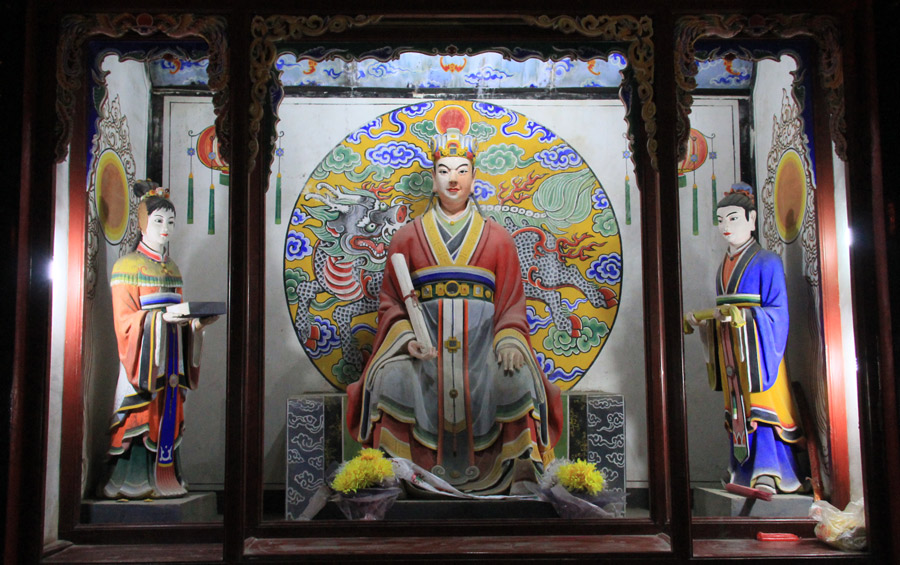Cai Lun Paper Culture Museum: A page out of history
- William Wang
 0 Comment(s)
0 Comment(s) Print
Print E-mail CRI, April 23, 2015
E-mail CRI, April 23, 2015
A replica of Cai Lun, the man who created the modern paper-making process. His tomb, located in Hanzhong, Shaanxi Province, is also a museum. Photo taken April 6, 2015. [Photo: CRIENGLISH.com/William Wang]
In the midst of this digital age, it's all too easy to overlook the paper which is still deeply embedded into our daily lives. Yet there was a time when these simple sheets also represented massive technological breakthrough. The modern practice of making paper originated in Shaanxi Province's city of Hanzhong, around 100 AD. The man credited with creating paper in this way and standardizing the process is the eunuch Cai Lun.
Paper's invention is not entirely dissimilar from the technology around us today. The increased ability to transmit information between individuals and the masses was a great leap forwards. Before paper, people generally wrote on stone surfaces, bamboo (bulky and heavy) or silk (too expensive). Paper was tough, flexible and relatively lightweight. Emperor He was delighted with Cai Lun's paper, and gave him great promotion.
Paper is one of China's 'four great inventions' (the others being gunpowder, the compass, and the printing process), a thing that clearly demonstrates Chinese society's advancement. As Hanzhong was on the Silk Road, it should come as no great surprise that Cai Lun's paper was a good eagerly bought and sold along the route. But it didn't reach the west for some time. In 9th century China, people were using Cai Lun's technique to make toilet paper, whereas in Europe basic paper-making didn't even get a foothold until the 11th century. America got it in the 16th century.
All things considered, Cai Lun's tomb is a modest one. A few temple-like buildings and stone steles precede the grassy knoll, under which Cai Lun's body was lain.
People will bow and offer incense to Cai Lun, but people equally visit to explore the attached museum. A number of displays in halls offer details about his life and information about the paper making process which he created (in Chinese).
In warmer months, there are also regular demonstrations show how the paper is made, definitely worth catching. Wood and other fibers are beat down into a pulp. In a pool dug into the ground, a master mixes up a pool of water tree fibers. Then he sweeps a screen through until he can pull it out with an even layer of fibers on it. The dripping layer of pulp is pulled off the screen and slapped onto the wall to dry. The resulting paper is triple the thickness of cartridge paper, textured and lovely. Some paper and cards made on site are available for purchase.
Hanzhong isn't on many people's bucket list, but if you are in the neighborhood, perhaps visiting the nearby crested ibis bird reservation, then missing Cai Lun's tomb would be a shame.
Address: Cai Lun Paper Culture Museum, Longting Town of Yangxian County, Hanzhong City, Shaanxi Province
Admission: 25 rmb






Go to Forum >>0 Comment(s)